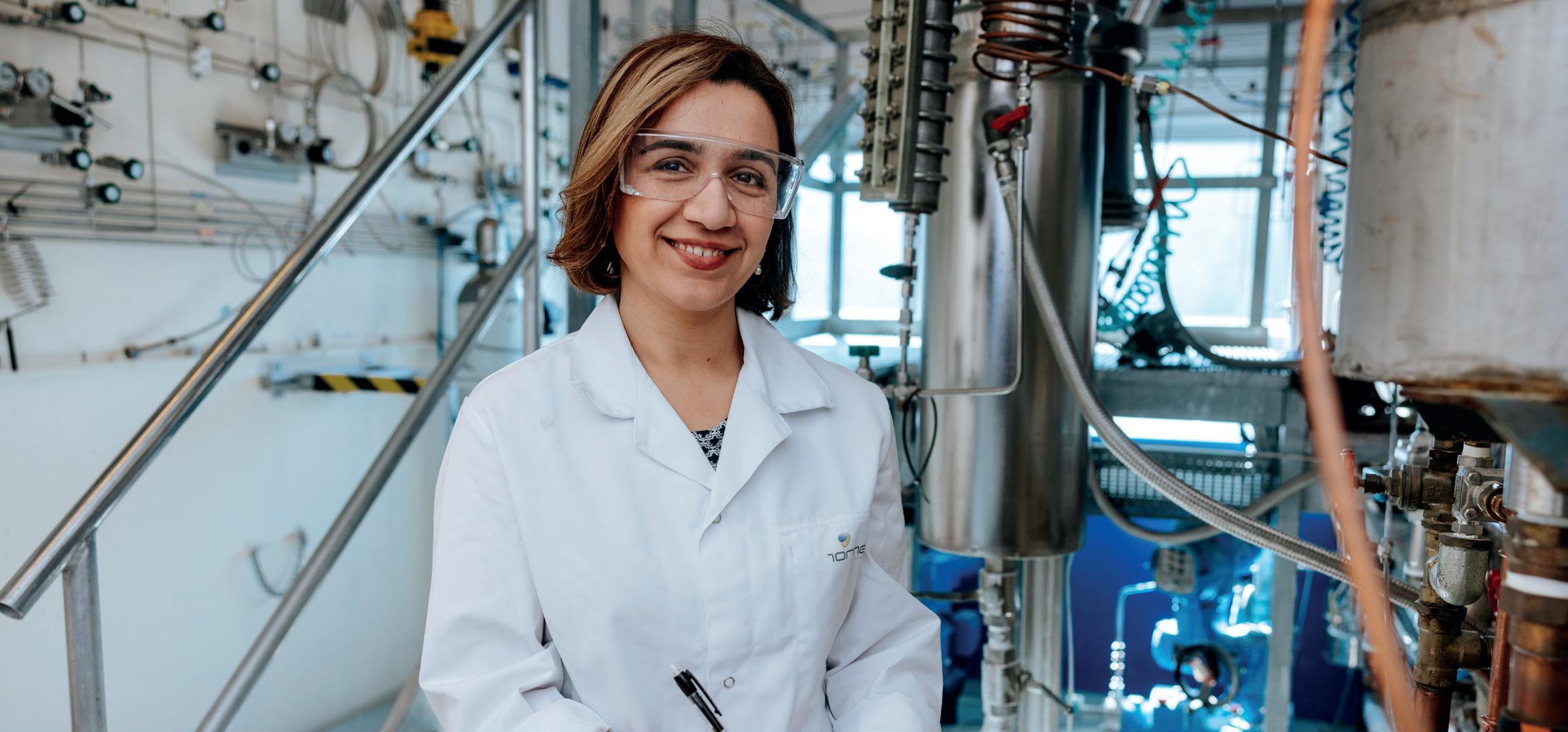
4 minute read
PYROCO₂ - EU research aim for plastics from CO₂
from Norner News 2023
by Norner AS
Authors: Siw Bodil Fredriksen (siw.fredriksen@norner.no) and Sara Ronasi (sara.ronasi@norner.no)
We find polymers in all areas of society, and they will be part of our daily life for the foreseeable future. Today, polymers are made from fossil feedstock; oil, and gas. The fast transition toward a more circular economy puts new expectations on the feedstock for polymers.
Market demand
The global brand owners and customers expect polymers to be made from non-fossil feedstock. This is particularly needed for the world’s largest volume polymers: polyethylene (PE) and polypropylene (PP). These polymers are produced from the monomers like ethylene, a two-carbon chemical, and propylene, a three-carbon chemical, respectively.
Non-fossil options
Three options for non-fossil feedstock are available:
• Chemical recycling of plastic waste
• Biomass
• Carbon dioxide (CO₂)
Of these options, CO₂ attracts high interest. CO₂ could originate from a variety of industrial emission points as well as from direct air capture. It is important that hydrogen is needed to convert CO₂ to ethylene or propylene.
CO₂ conversion
A variety of technologies to convert CO₂ to a range of chemicals and materials already exist, and new ones are currently being developed. No matter the technology, the first challenge is to convert CO₂ to ethylene and propylene as the major products in a high-yield process. The second challenge is to purify these two monomers, to meet the strict requirements of “polymer grade” quality to maintain high catalyst yield.
Once this is in place, the CO₂-derived ethylene and propylene can be used in all current industrial plants with state of-the-art catalysts to manufacture any PE and PP
In other words, they are drop-in monomers in the current value chain. The origin of the PE and PP polymers is decoupled from fossil feedstock, with no changes to the product quality and/or existing infrastructure. The fully CO₂-derived PE and PP have exactly the same polymer identity, properties, and performance and are identical in every way to the fossil-based versions.

Research and pilot
Norner contributes to the development of propylene and PP made from CO₂ in the PYROCO₂ project. The project will develop novel technology to produce the three-carbon platform chemical acetone from CO₂ in an energy-efficient thermophilic microbial process. This technology will be demonstrated in a 4000 tons/year pilot to be constructed and built at Herøya, Norway. The CO₂-derived acetone produced by the PYROCO₂ processes will further be used as a drop-in chemical in a range of different processes to produce CO₂-derived chemicals and materials.
Norner's role
Norner will be the off-taker of CO₂-derived propylene in PYROCO₂. Norner will carry out a side-by-side analysis of the CO₂-derived propylene and of conventional fossil-derived propylene to demonstrate that they are chemically equivalent. At Norner, we will carry out extensive polymerization tests in our industrial standard, semi-continuous bench-scale reactor to produce fully CCO₂-derived PP. Again, a side-byside comparison will be done between CO₂-derived and fossil-derived PP to demonstrate identical polymer properties.
Norner polymerisation laboratory
Norner operates bench-scale reactors capable of using CO₂-derived propene as feedstock. Norner’s Application Centre has advanced facilities to produce demonstration items for multiple applications like thermoforming, injection moulding, and blow moulding, where we can convert the PP from PYROCO₂ into 100 % CO₂-derived products like films, cups, and bottles.
Norner’s competence covers many areas of the polyolefin value chain essential for the development and validation of alternative feedstocks.
These include:
• Raw material analysis and purification
• Catalyst selection, development, and optimisation
• Polymerisation and process studies
• Process development and upscaling
• Additive formulations prepared for recycling
• Product conversion and development
• Plant optimization

About PYROCO₂
The PYROCO₂ project is funded in the frame of the Horizon 2020 programme (Topic LCGD-3-1-2020 - Closing the industrial carbon cycle to combat climate change - Industrial feasibility of catalytic routes for sustainable alternatives to fossil resources). The project has a largely industry-driven consortium of 20 partners, a budget of 43 million Euro, and a duration of 60 Months. Norner has responsibility in WP3- From acetone to marketable products and WP5- Process integration and sustainability assessment.
Grant agreement ID: 101037009






